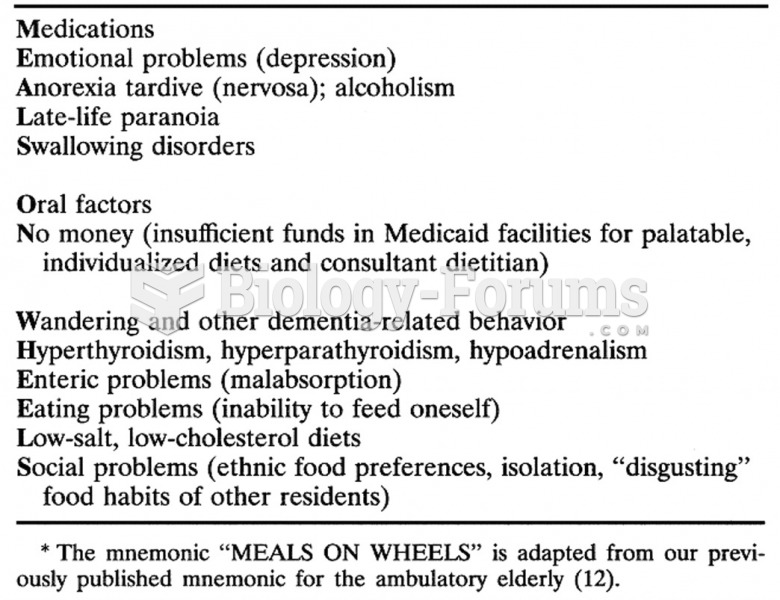This topic contains a solution. Click here to go to the answer
|
|
|
Did you know?
Bacteria have been found alive in a lake buried one half mile under ice in Antarctica.
Did you know?
The types of cancer that alpha interferons are used to treat include hairy cell leukemia, melanoma, follicular non-Hodgkin's lymphoma, and AIDS-related Kaposi's sarcoma.
Did you know?
Atropine was named after the Greek goddess Atropos, the oldest and ugliest of the three sisters known as the Fates, who controlled the destiny of men.
Did you know?
All adults should have their cholesterol levels checked once every 5 years. During 2009–2010, 69.4% of Americans age 20 and older reported having their cholesterol checked within the last five years.
Did you know?
In the United States, an estimated 50 million unnecessary antibiotics are prescribed for viral respiratory infections.
 Aging is more than biology. In some cultures, Jennifer Lopez, 43, would be considered elderly. Lopez ...
Aging is more than biology. In some cultures, Jennifer Lopez, 43, would be considered elderly. Lopez ...
 During their elderly years, men and women continue to exhibit aspects of the gender roles that they ...
During their elderly years, men and women continue to exhibit aspects of the gender roles that they ...





